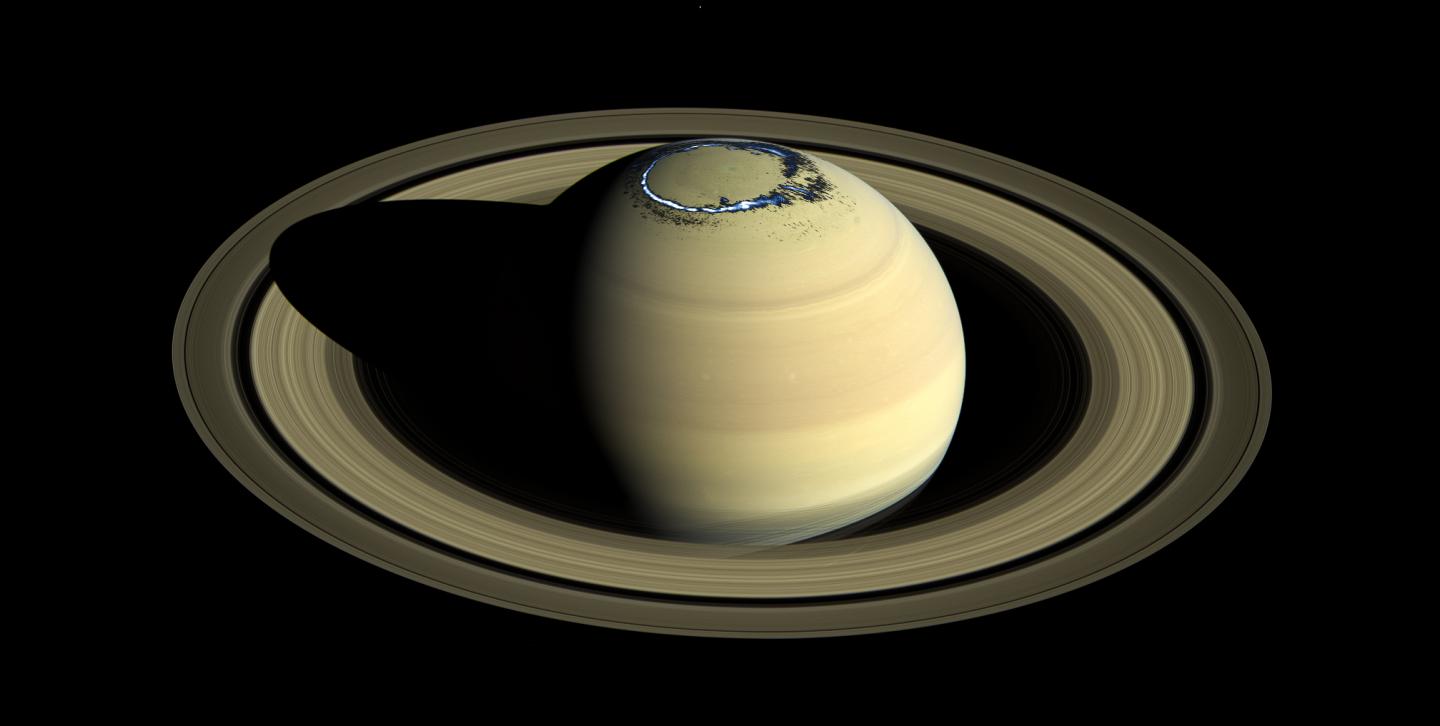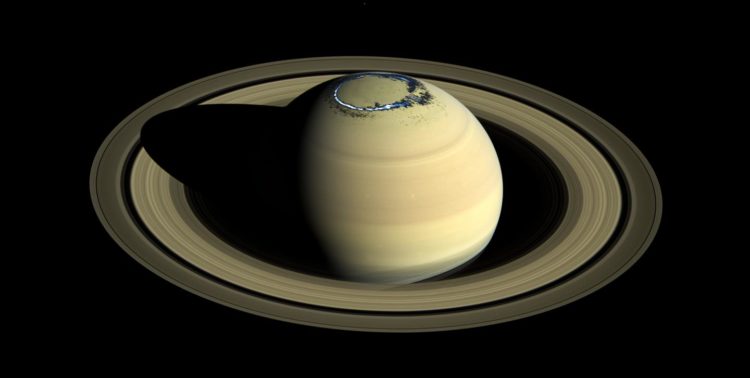
Credit: NASA/JPL-Caltech/Space Science Institute/A. Bader (Lancaster University).
Researchers are busy analysing some of the final data sent back from the Cassini spacecraft which has been in orbit around Saturn for more than 13 years until the end of its mission in September 2017.
For the last leg of its journey, Cassini was put on a particularly daring orbit passing between Saturn and its rings which brought it closer to Saturn than ever before. This allowed scientists to obtain images of Saturn’s ultraviolet auroras in unprecedented resolution.
The new observations are detailed in two new studies published in Geophysical Research Letters and JGR: Space Physics.
Saturn’s auroras are generated by the interaction of the solar wind, a stream of energetic particles emitted by the Sun, with Saturn’s rapidly rotating magnetic field. They are located in the planet’s polar regions and known to be highly dynamic, often pulsating and flashing as different dynamic processes occur in the planet’s plasma environment.
Lancaster University PhD student and lead author of the research Alexander Bader said: “Surprisingly many questions revolving around Saturn’s auroras remain unanswered, even after the outstanding success of the Cassini mission.
“This last set of close-up images gives us unique highly detailed views of the small-scale structures which couldn’t be discerned in previous observations by Cassini or the Hubble Space Telescope. We have some ideas about what their origin could be, but there is still a lot of analysis to be done.”
Satellite imagery alone will hardly be enough to unravel the aurora’s mysteries – the energetic particles causing the bright lightshows around Saturn’s poles originate far away from the planet’s surface where magnetic field lines twist and clouds of plasma interact with one another. When located in the right region, Cassini was sometimes embedded in the particle stream connecting the auroras to the magnetosphere.
First analysis of the spacecraft’s particle measurements recorded during these times showed that Saturn’s auroras, like Jupiter’s, are generated by much more energetic particles than Earth’s. However, the underlying physical mechanisms appear to show similarities between all the three.
Even though Cassini’s mission is over, the data it provided remains full of surprises and will continue to help researchers understand the workings of giant planet auroras, especially in combination with Juno observations of Jupiter’s magnetosphere.
###
Media Contact
Gillian Whitworth
[email protected]
01-524-592-612
Related Journal Article
http://dx.





